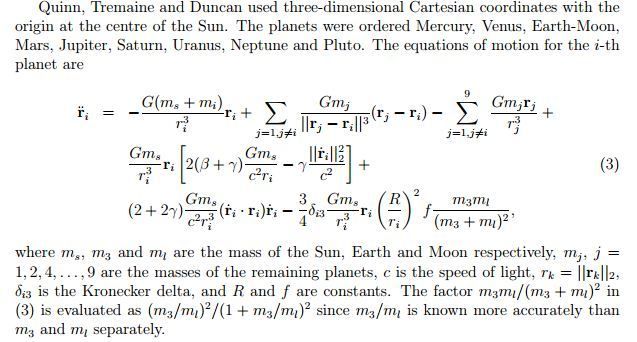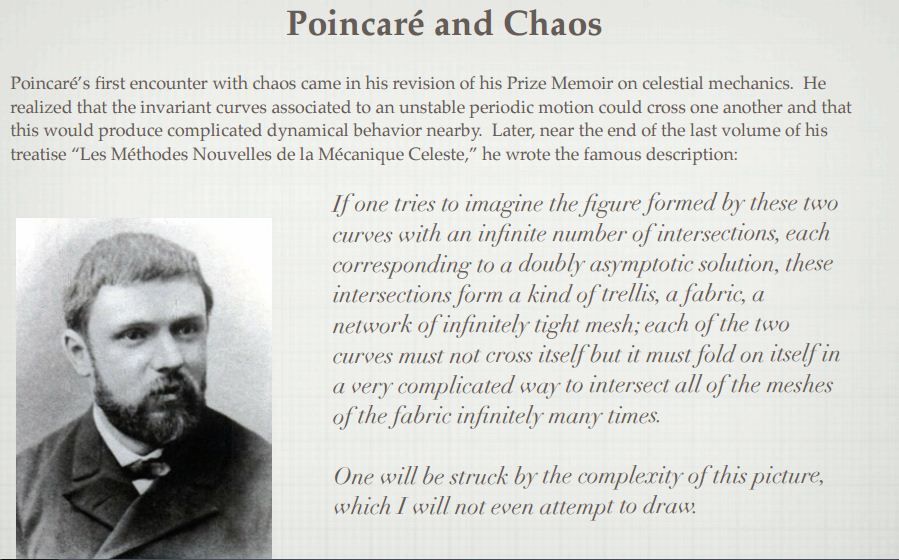No one has been able to solve the faint young sun paradox.
This paradox is of outmost importance, since it demolishes the accepted age of the planetary system as a whole.
You cannot use the moon tidal heating argument.
"Currently, the moon is moving outward from the earth by 3.82 cm/yr (1.5 in/yr). However, this recession is highly nonlinear and would have been greater in the past. If one assumes unlimited extrapolation back in time, gravity theory shows the moon in direct physical contact with earth about 1.55 billion years ago. This is not to say that the moon was ever this near or this old. In fact, a moon located anywhere in the vicinity of the earth would be fragmented, resulting in a Saturn-like ring of debris encircling the earth. This follows because the earth’s gravity force would overcome the moon’s own cohesive force. The tides lead to a limited time scale for the moon, far less than 1.55 billion years. However, evolutionists assume that the moon and solar system are 4.6 billion years old. Also, life is said to have originated on earth about 3.5 billion years ago. The fundamental problem with the evolutionary time scale is obvious."
You just went to the wikipedia page and copied and information there on the moon tidal heating, without giving it a second thought.
Obviously, then, you have no knowledge of one of the most debated scientific issues of current times:
WHAT WAS THE RECESSION RATE OF THE MOON?
No scientist today can explain the SUDDEN increase in the rate of the recession, needed to elucidate the current orbit of the Moon.
I'm more qualified to defend NASA, spacecraft, and gravity. This comes from a lifetime of fascination, and 10+ years of serious study. We are going to see just how qualified you are.
THREE BODY PROBLEM PARADOXHere are the official RE equations of motion:

In the RET model, NOT EVEN the three body problem can be explained/described mathematically by a set of differential equations.
That is, the three body problem cannot be explained using the conventional approach: attractive gravity. A system consisting of a star (Sun), a planet (Earth), and a satellite of the planet (Moon) cannot be described mathematically; this fact was discovered long ago by Henri Poincare, and was hidden from public view:
http://www.theflatearthsociety.org/forum/index.php?topic=30499.msg987360#msg987360(KAM theory, homoclinic orbits, Smale horseshoes)
The quote from Henri Poincare, the greatest mathematician in the world at the end of the 19th century (S. Ramanujan was to appear some ten years later on the scene), has been deleted/censored from textbooks on the celestial mechanics at the undergraduate/graduate level.
A differential equation (initial value d.e.) approach to celestial mechanics IS IMPOSSIBLE.
As Poincare experimented, he was relieved to discover that in most of
the situations, the possible orbits varied only slightly from the initial
2-body orbit, and were still stable, but what occurred during further
experimentation was a shock. Poincare discovered that even in some of the
smallest approximations some orbits behaved in an erratic unstable manner. His
calculations showed that even a minute gravitational pull from a third body
might cause a planet to wobble and fly out of orbit all together.
Here is Poincare describing his findings:
While Poincare did not succeed in giving a complete solution, his work was so impressive that he was awarded the prize anyway. The distinguished Weierstrass, who was one of the judges, said, 'this work cannot indeed be considered as furnishing the complete solution of the question proposed, but that it is nevertheless of such importance that its publication will inaugurate a new era in the history of celestial mechanics.' A lively account of this event is given in Newton's Clock: Chaos in the Solar System. To show how visionary Poincare was, it is perhaps best if he described the Hallmark of Chaos - sensitive dependence on initial conditions - in his own words:
'If we knew exactly the laws of nature and the situation of the universe at the initial moment, we could predict exactly the situation of that same universe at a succeeding moment. but even if it were the case that the natural laws had no longer any secret for us, we could still only know the initial situation approximately. If that enabled us to predict the succeeding situation with the same approximation, that is all we require, and we should say that the phenomenon had been predicted, that it is governed by laws. But it is not always so; it may happen that small differences in the initial conditions produce very great ones in the final phenomena. A small error in the former will produce an enormous error in the latter. Prediction becomes impossible, and we have the fortuitous phenomenon.' - in a 1903 essay 'Science and Method'
That is why the conspirators had to invent a very complicated new theory, called chaos theory, with the help of G.D. Birkhoff and N. Levinson; their work was the inspiration for S. Smale's horseshoe map, a very clever way to describe Poincare's original findings as "workable" and "manageable". The formidable implications are, of course, that chaotical motion of the planets predicted by the differential equation approach of the London Royal Society is a thing that could happen ANYTIME, and not just some millions of years in the future, not to mention the sensitive dependence on initial conditions phenomenon.
Even measuring initial conditions of the system to an arbitrarily high, but finite accuracy, we will not be able to describe the system dynamics "at any time in the past or future". To predict the future of a chaotic system for arbitrarily long times, one would need to know the initial conditions with infinite accuracy, and this is by no means possible.
This is why the computer model of Jacques Laskar is pure fantasy, as it is completely detached from reality.
http://ptrow.com/articles/ChaosandSolarSystem5.htmhttp://web.archive.org/web/20090108031631/http://essay.studyarea.com/old_essay/science/chaos_theory_explained.htmRE theory requires a full void, otherwise the equations which "describe" the orbits of the planets will have to include friction terms.
KEPLER MOTION
In an appropriate coordinate system, the motion of a planet around the sun (considered as fixed) with the attractive force being proportional to the inverse square of the distance /z/ of the planet from the sun is given by the solution of the second order conservative system with the potential function -/z/^-1 for z =/0.
A mechanical system without friction can be described in the Hamiltonian formulation.
References for Celestial Mechanics and Hamiltonian mechanics:
V.I. Arnold, Mathematical Methods of Classical Mechanics, Springer-Verlag, 1978
C.L. Siegel and J. Moser, Lectures on Celestial Mechanics, Springer-Verlag, 1971
J. Moser, Stable and Random Motions in Dynamical Systems, Princeton Univ. Press, 1973
Area Preserving Maps, Nonintegrable/Nearly Integrable Hamiltonians, KAM Theory:
http://www.math.rug.nl/~broer/pdf/kolmo100.pdf
Here is an introduction to homoclinic tangles/orbits, explained visually:
http://www.math.umn.edu/~rmoeckel/presentations/PoincareTalk.pdfNow, let us get more technical in describing the stability of the heliocentrical solar system.
Two of the greatest Soviet mathematicians of the 20th century, A.N. Kolmogorov and V.I. Arnold asked the following question: to what extent the geometric structure of the quasi-periodic dynamics of a Hamiltonian system persists under small perturbations that destroy the toroidal symmetry?
This led to the famous KAM theory (Kolmogorov-Arnold-Moser); however, it is valid for "sufficiently" small perturbations.
In reality, the perturbations in the solar system are far too large to apply KAM theory.
So, the mathematicians have to rely on computing Lyapunov exponents, in order to try to predict any region of instability/chaos.
Even in this case, the measured Lyapunov exponent may have no relation to the true exponent: great care has to be taken in computing such quantities.
In 1989, J. Laskar proudly announced that the exponential divergence time for the solar system is 5 million years.
However, again, this calculation DOES NOT take into account the sensitivity of the results due to uncertainties of the knowledge of true masses and the INITIAL CONDITIONS of the planets.
Jack Wisdom (MIT): It is not possible to exclude the possibility that the orbit of the Earth will suddenly exhibit similar wild excursions in eccentricity.
The exponential divergence of chaotic trajectories precludes long-term prediction given the limited knowledge of the state of our solar system.
Lyapunov exponents and symplectic integration.
Let d(t) be the distance between two solutions, with d(0) being their initial separation. Then d(t) increases approximately as d(0)e
λt in a chaotic system, where λ is the Lyapunov exponent. The inverse of the Lyapunov exponent, 1/λ, is called the Lyapunov time, and measures how long it takes two nearby solutions to diverge by a factor of e.
Since the solar system is not integrable, and experiences unpredictable small perturbations, it cannot lie permanently on a KAM torus, and is thus chaotic.
Sussman and Wisdom's 1992 integration of the entire solar system displayed a disturbing dependence on the timestep of the integration (measurement of the Lyapunov time).
Thus, different researchers who draw their initial conditions from the same ephemeris at different times can find vastly different Lyapunov timescales.
Wayne Hayes, UC Irvine
To show the importance and the dependence on the sensitivity of the initial conditions of the set of differential equations, an error as small as 15 meters in measuring the position of the Earth today would make it impossible to predict where the Earth would be in its orbit in just over 100 million years' time.
To put it bluntly: there is no way to predict anything pertaining to the heliocentrical solar system based on Newton's description of the orbit of the planets using a set of nonlinear differential equations.
Poincare showed that the problem is not integrable. Most orbits are unstable and may be chaotic, which means that arbitrarily close initial conditions result in orbits that separate exponentially and cannot be computed numerically for arbitrarily long times.
It has ALREADY been proven that the three body problem is not integrable; the sensitivity property holds without resorting to numerical solutions (these solutions just show the extraordinary dimension of the entire problem).
Now, so that everybody will understand the nature of the problem, a technical incursion into the three body problem.
Hyperbolic periodic solutions have stable and unstable manifolds consisting of solutions which converge to the periodic solution as t > ±infinity. Poincare called these asymptotic solutions. A solution which lies in the both the stable and unstable manifolds approaches the periodic solution in both time directions and is called bi-asymptotic.
Poincare’s famous paragraph quoted in the first page of this thread arose from his realization that while the stable and unstable curve had to intersect, they did not have to overlap exactly. In fact, more likely, they could intersect transversely.
Then because they are invariant the hyperbolic dynamics forces them to fold and cross in a very complicated manner.
Thus we arrive the phenomenon knows as homoclinic tangle.
Poincare discovered that even in some of the smallest approximations some orbits behaved in an erratic unstable manner. His calculations showed that even a minute gravitational pull from a third body might cause a planet to wobble and fly out of orbit all together.
THE MORE COMPLICATED THE MATHEMATICAL MODEL, THE GREATER IS THE DEPENDENCE ON THE INITIAL CONDITIONS.